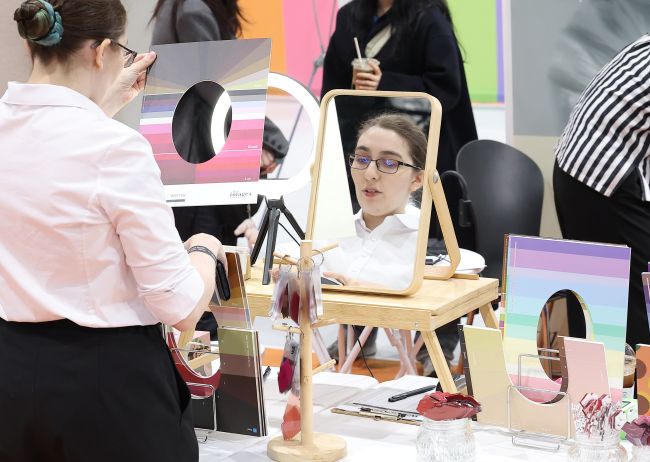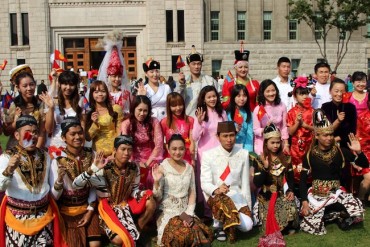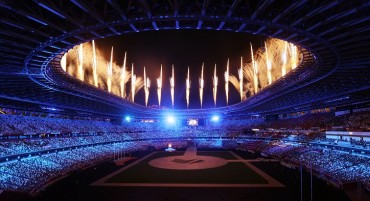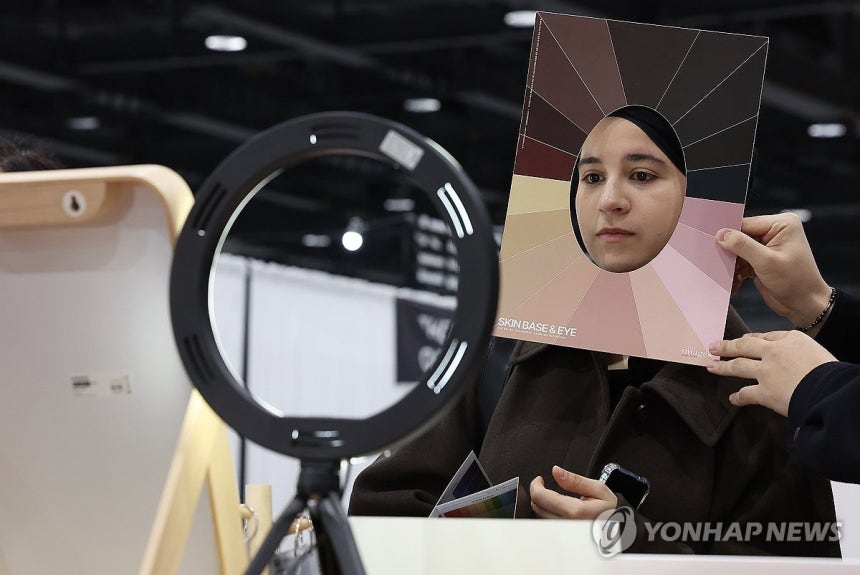
A foreign visitor experiences a personal color analysis at the “Seoul Indie Beauty Show” held at COEX Magok in Gangseo District, Seoul, on March 13 this year.
SEOUL, July 8 (Korea Bizwire) – In a country where knowing your MBTI personality type is as common as your favorite coffee order, another trend is captivating foreign visitors: personal color analysis.
A growing number of tourists in South Korea are making appointments at “personal color studios,” where stylists assess an individual’s skin tone, eye color, and hair shade to recommend the most flattering hues for clothing and makeup.
The experience, rooted in color theory and enhanced by “color draping” techniques, has become a social media phenomenon and a unique part of the Korean beauty (K-beauty) tourism wave.
“I don’t even follow K-pop or K-dramas, but I knew about this from TikTok,” said Jessica, a 24-year-old Korean-American visiting Seoul’s trendy Hongdae district. “In the U.S., the same service is too expensive. Here, it’s half the price—and you can buy matching cosmetics right after.”
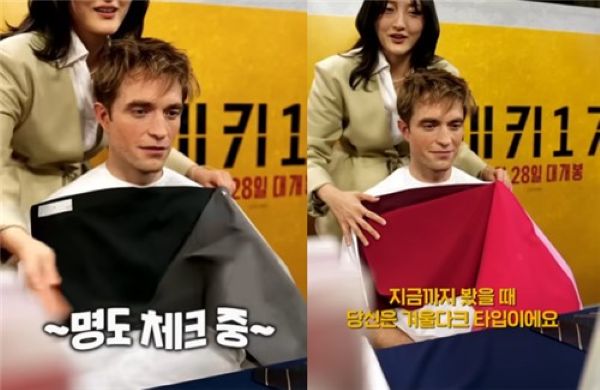
Hollywood actor Robert Pattinson reportedly received a personal color consultation while promoting his film Mickey 17 in Seoul. (Image from YouTube)
South Korea’s booming beauty exports—now second only to France globally—are fueling this trend. With idols like BLACKPINK’s Jisoo and Red Velvet’s Seulgi openly sharing their own color analyses, fans are eager to replicate their glow-ups.
Even Hollywood actor Robert Pattinson reportedly received a personal color consultation while promoting his film Mickey 17 in Seoul.
At ‘Beauty Play,’ a government-backed beauty promotion center showcasing small and mid-sized cosmetic brands, foreign visitors were lining up for free consultations last week.“All my makeup is from Korea,” said Chinchin, 24, a tourist from Switzerland. “In Europe, you can’t find personalized beauty services like this.”
The boom is more than anecdotal. According to the Seoul Tourism Organization, spending by individual foreign tourists on beauty and wellness services has jumped more than tenfold since the pandemic, reaching an average of 154,000 won (around $110) per person in 2024, up from 13,000 won in 2019.
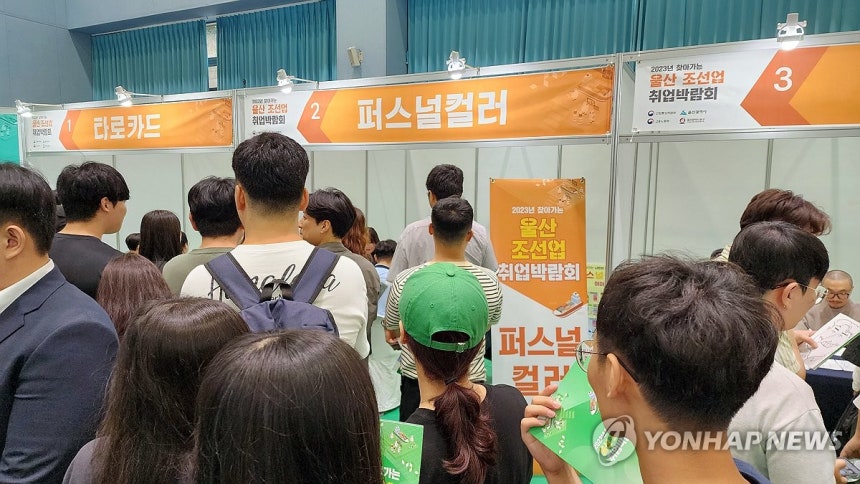
Personal color analysis is also gaining popularity among young job seekers preparing for interviews. The photo shows job seekers gathered in front of a personal color analysis booth at a job fair.
Studios in hotspots like Hongdae report welcoming over 1,000 foreign visitors per month during peak seasons. Many offer services in English, Chinese, and Japanese, with some even accommodating dozens of clients at once—a clear indication that personal color analysis has become not only a trend, but a viable tourism industry product.
Social media has amplified the craze. Under hashtags like #GlowUpInKorea, users post TikToks documenting dramatic before-and-after transformations, often including stops for color diagnosis, cosmetic shopping, and even visits to plastic surgery clinics.
For fans like Lucy, a 20-year-old German tourist and follower of the K-pop group ATEEZ, the appeal is holistic: “Once you’re into K-pop, beauty and fashion just come with it.”
As the K-beauty industry continues to blend aesthetic expertise with cultural cachet, South Korea’s color-coded beauty scene is proving to be more than skin deep—it’s a booming, border-crossing business.
Lina Jang (linajang@koreabizwire.com)


